Los Angeles — Feb. 12, 2019
There’s something brewing in Historic Filipinotown in Los Angeles. The rumbles of transformation are palpable, with rents increasing, investors flipping craftsman houses, and new establishments finding opportunity within blocks of unoccupied real estate. Hi-Fi, as it is called—a long skinny neighborhood sandwiched between Glendale and Hoover, mostly stretched out along paralleling Temple Street and Beverly Boulevard—is becoming a haven for creative culinary pursuits.
With more and more of Los Angeles going the way of upscale Venice or Silverlake, small businesses looking to find a brick and mortar are setting their sights on pockets of lower rent—areas that rarely make appearances in guidebooks but have the potential to become rising stars as the tide of gentrification seeps into every corridor of the city. Unlike other regions of rapid growth, however, Hi-Fi stands out by maintaining its diversity.
Although the Filipino population of Historic Filipinotown hovers around twenty-five percent as of 2016, the area is fifty-six percent Hispanic, with the other nineteen percent divided between other Asians, Whites and Blacks. The small business owners moving into the neighborhood are majority minority, with many of them being women.
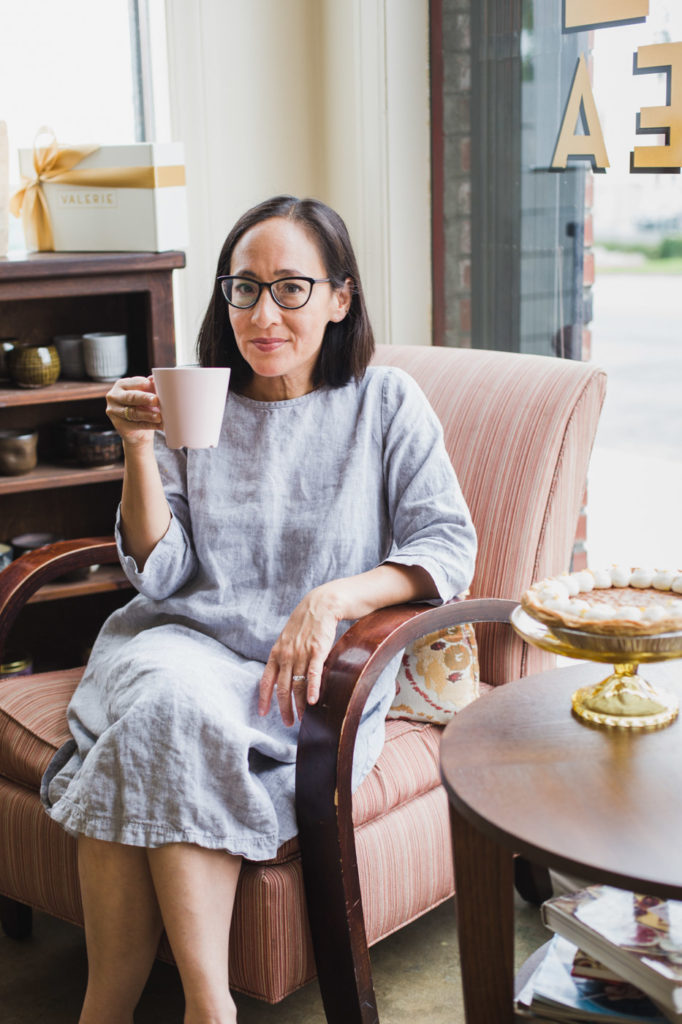
Valerie Gordon, whose confectionary and bakery Valerie Confections first graced the neighborhood over a decade ago, has witnessed the change as a long-standing occupant. Gordon (who is herself of Chinese heritage) celebrates the recent boom, noting the area was in need of some attention. “It’s wonderful,” she says. “People are relieved more businesses are opening because this stretch has been underserved.” There is now a coffee shop and a cocktail bar where previously there were none. The clientele seems to have shifted slightly as well. Gordon notes, “[The shop was] always a destination where people would come specifically to us, and now people are coming in from the neighborhood, which is a whole new thing.”
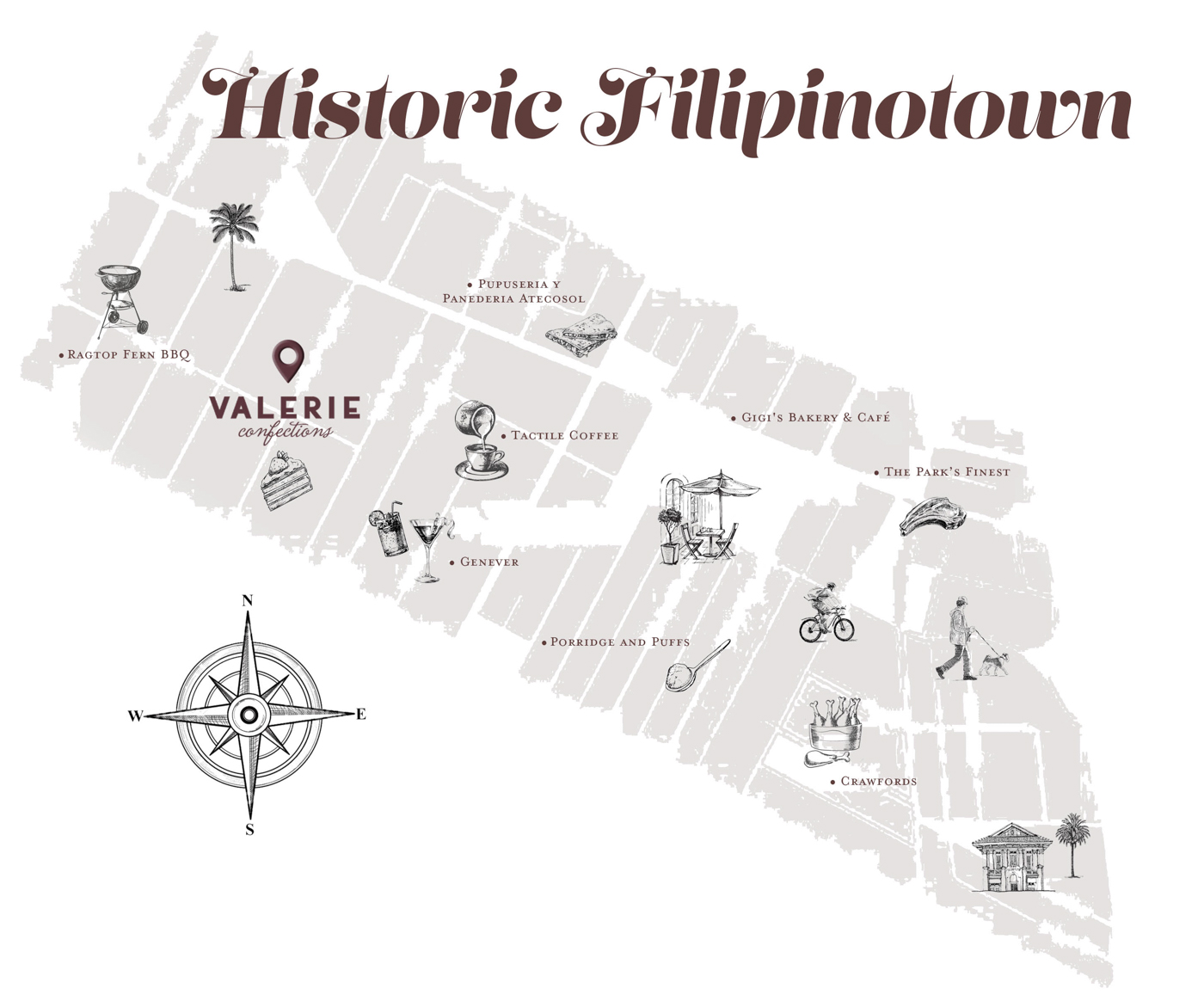
I met Gordon to tour her favorite spots in Hi-Fi—a mixture of old-school hangs and new kids on the block—and discussed the optimistic goals and potential consequences of a thriving city. She guided me to observe the evolution of the neighborhood, a melting pot of tasty cafés, bars and restaurants. And I trailed in her energizing jet stream as she waltzed into each place as a proud old friend.
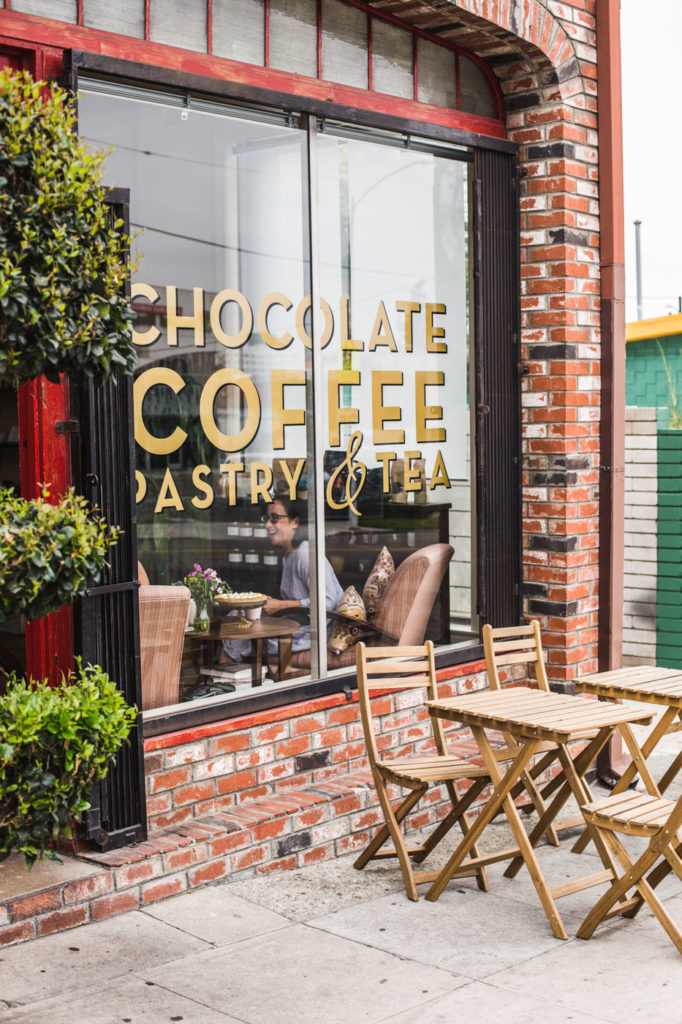
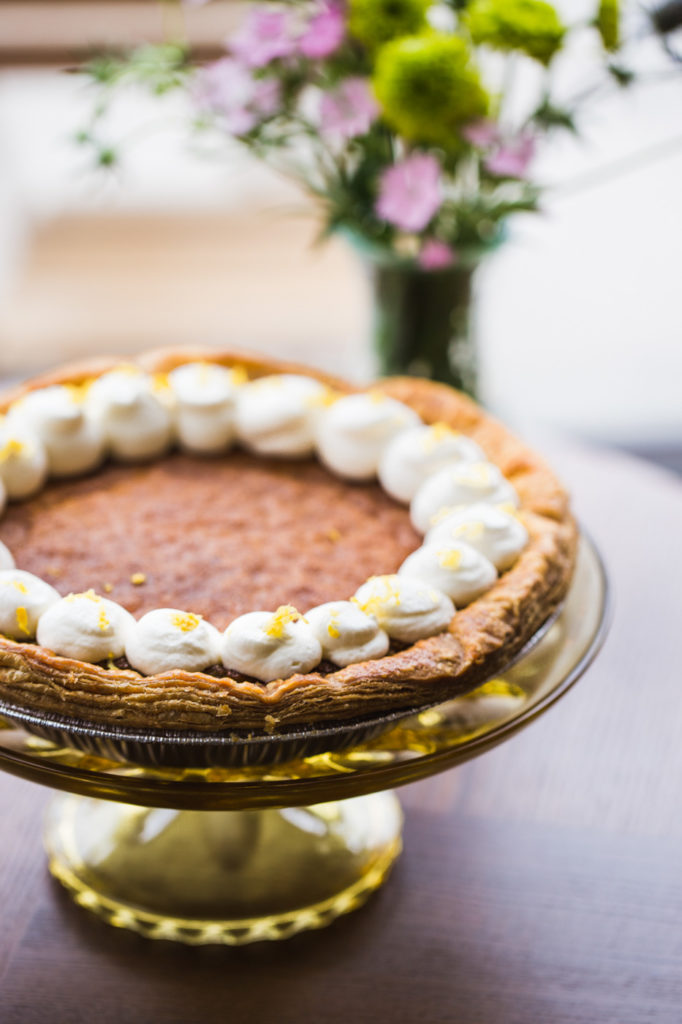
—
Valerie Confections
3364 W 1st Street
Los Angeles, CA 90004
When she launched her shop in Historic Filipinotown in 2007, Gordon kicked off a dessert empire in Los Angeles. Her headquarters—the storefront attached to this address—is actually her smallest outpost to date, with a location in Echo Park and another opening in Woodland Hills later this year. Offering tea, coffee and a small selection of pastries, the café showcases more confections than anything else. It’s the perfect pit stop for a host gift or a sophisticated sweet tooth. It’s also a fantastic jumping off point to our culinary treasure hunt. Gordon bounds in, as I’ve discovered she’s known to do, contrasting my morning soft focus personality with wild-eyed enthusiasm. “I wore a tent today because I wasn’t sure how much we were going to eat,” she boasts from inside a chic linen dress. We sip tea and snack on a sample of zucchini bread as our first stomach stretch of the morning.
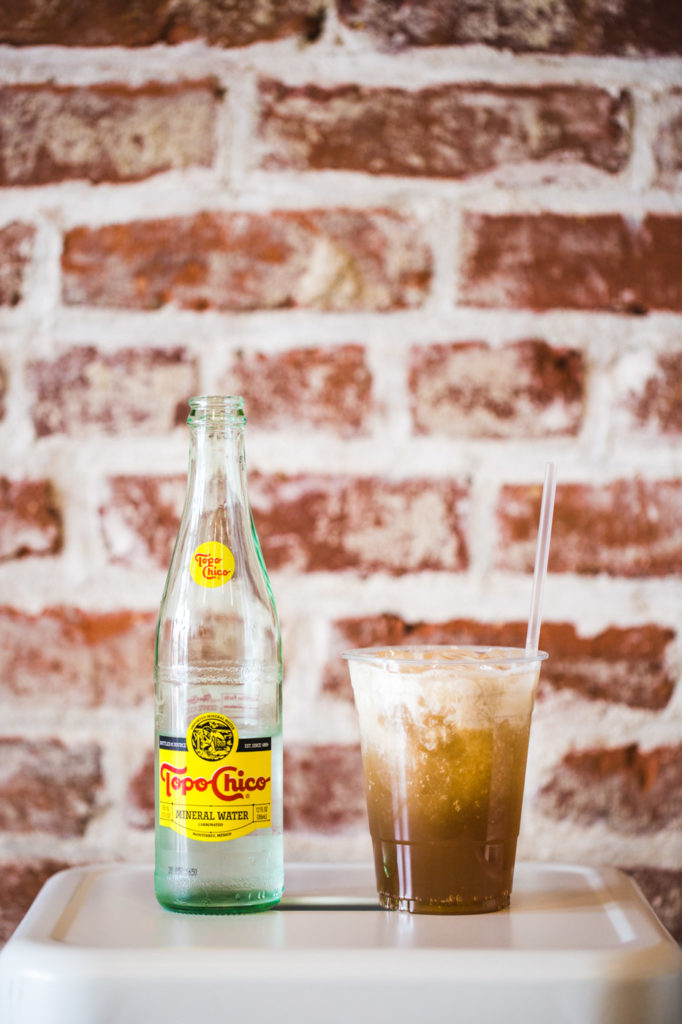
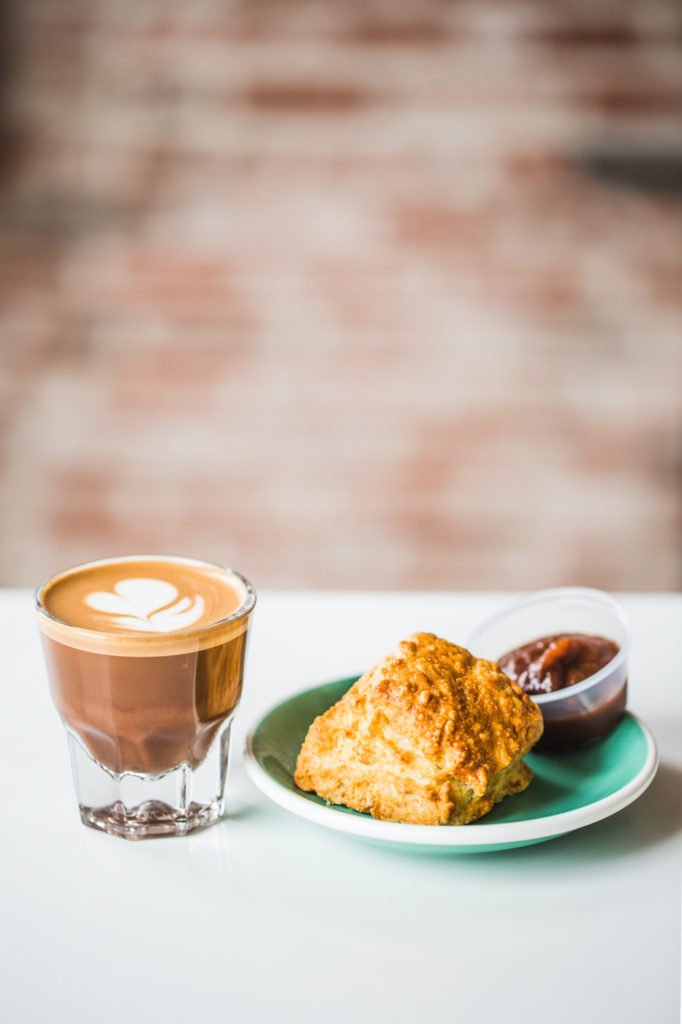
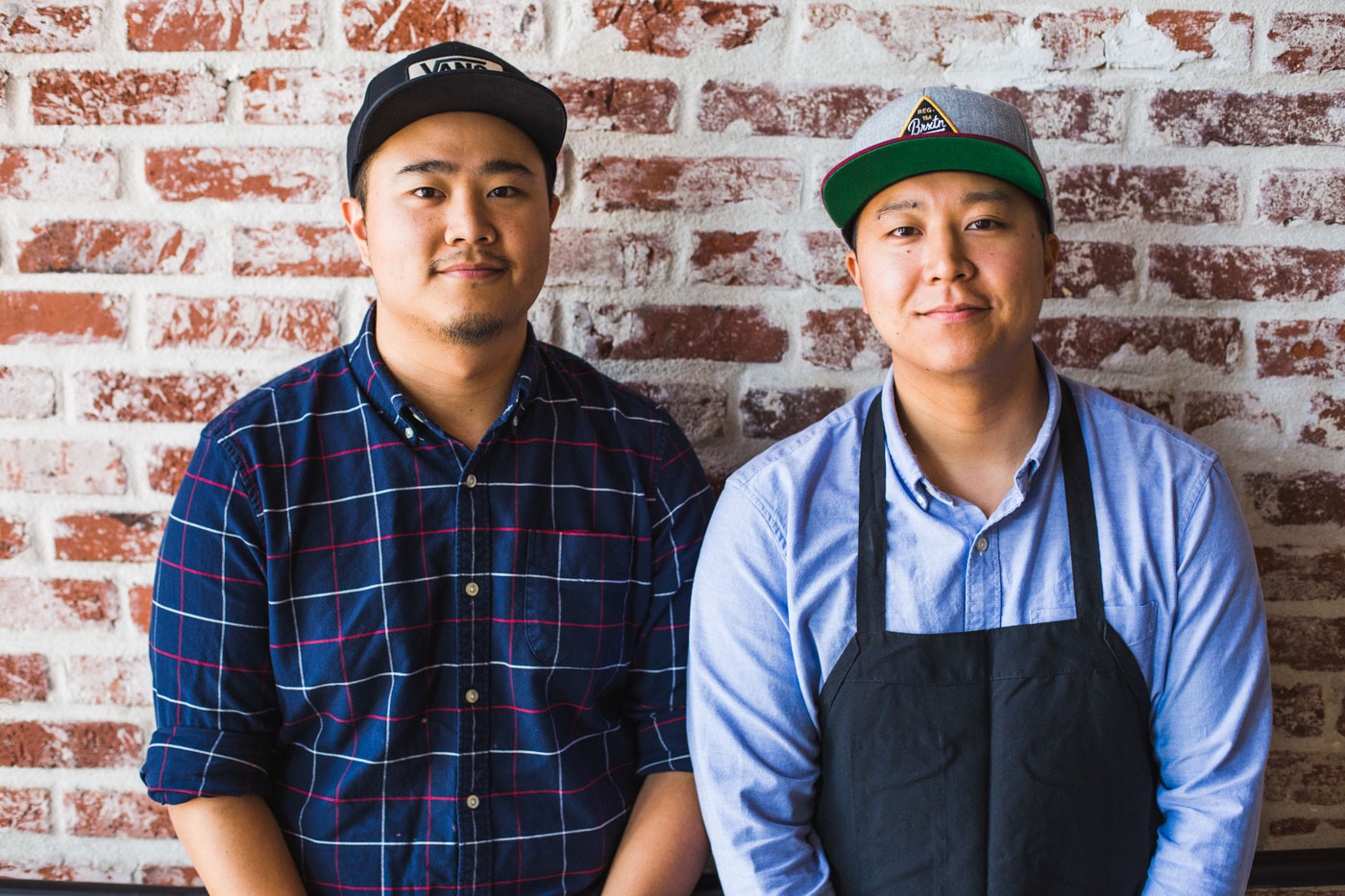
—
Tactile Coffee
3109 Beverly Boulevard
Los Angeles, CA 90057
Even fresh out of the oven, most biscuits are cursed for being so far from the fluffy, buttery, perfectly crunch-kissed biscuits from Tactile Coffee. Co-owner Eric Yi learned his magical pastry ways in Chef Ludo Lefebvre’s food truck, Ludo Bites, and improbably makes these biscuits today in a countertop convection oven. In addition to a short menu of vittles, his brother Mike makes some of the best specialty drinks in the city. We coo over an earthy dark chocolate ganache cortado—a modernized rendition of the thick chocolate lacquer churning in European cafés—balanced by a hint of sea salt. For the Topo Chico devotee, I suggest the chai creme soda.
After running a successful truck for two years, the Korean-American duo chose Historic Filipinotown to set up shop hoping the area would transition and grow. “We kept being drawn back to here,” says Mike. “We had a feeling it was going to be good.” And they’ve been pleasantly surprised by the hospitality.
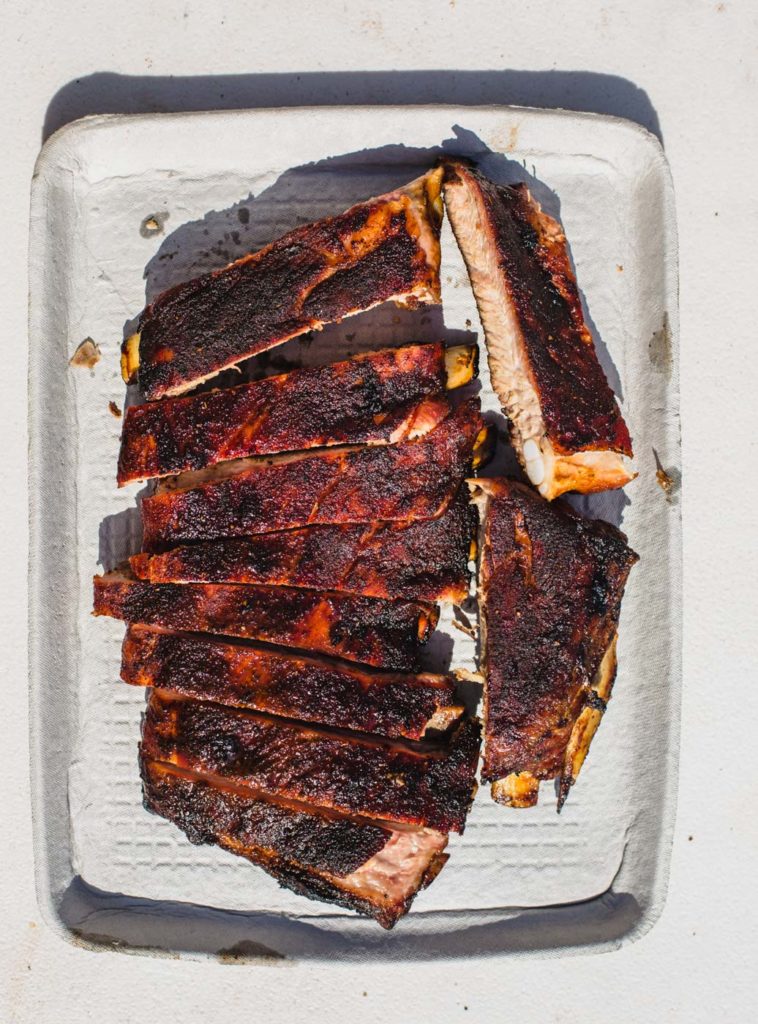
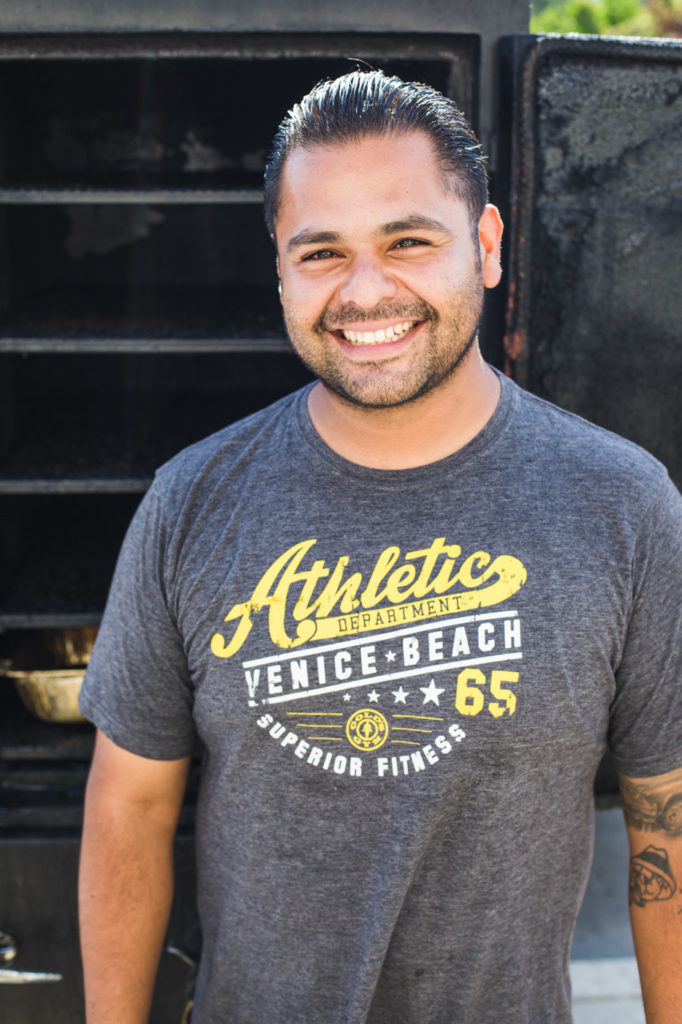
—
Ragtop Fern BBQ
120 S Westmoreland Avenue
Los Angeles, CA 90004
In the middle of a dead-end block a couple streets down from Valerie, Fernando Carrillo meets us with a smile blazing and eyes twinkling. He is joyously sweaty, taking a break from fixing up a car with his dad to deliver our sticky, meltingly tender rack of pork ribs.
Carrillo is a Hi-Fi native; the sidewalk where the smoker stands leads to the apartment where Carrillo was born, raised and now lives (his parents moved to the apartment next door). He knows everyone on his street and has seen the changes to the neighborhood firsthand.
His passion for barbecue is self-taught and obsessive. “If I don’t know something, I get consumed,” he says. “I can’t stop thinking [about] it. I taught myself how to [smoke meat] off of YouTube, and reading. And just trial and error.” He makes everything himself, from the spiced rub down to the vertical smoker, named Lucifer, which he welded with the help of a blacksmith friend.
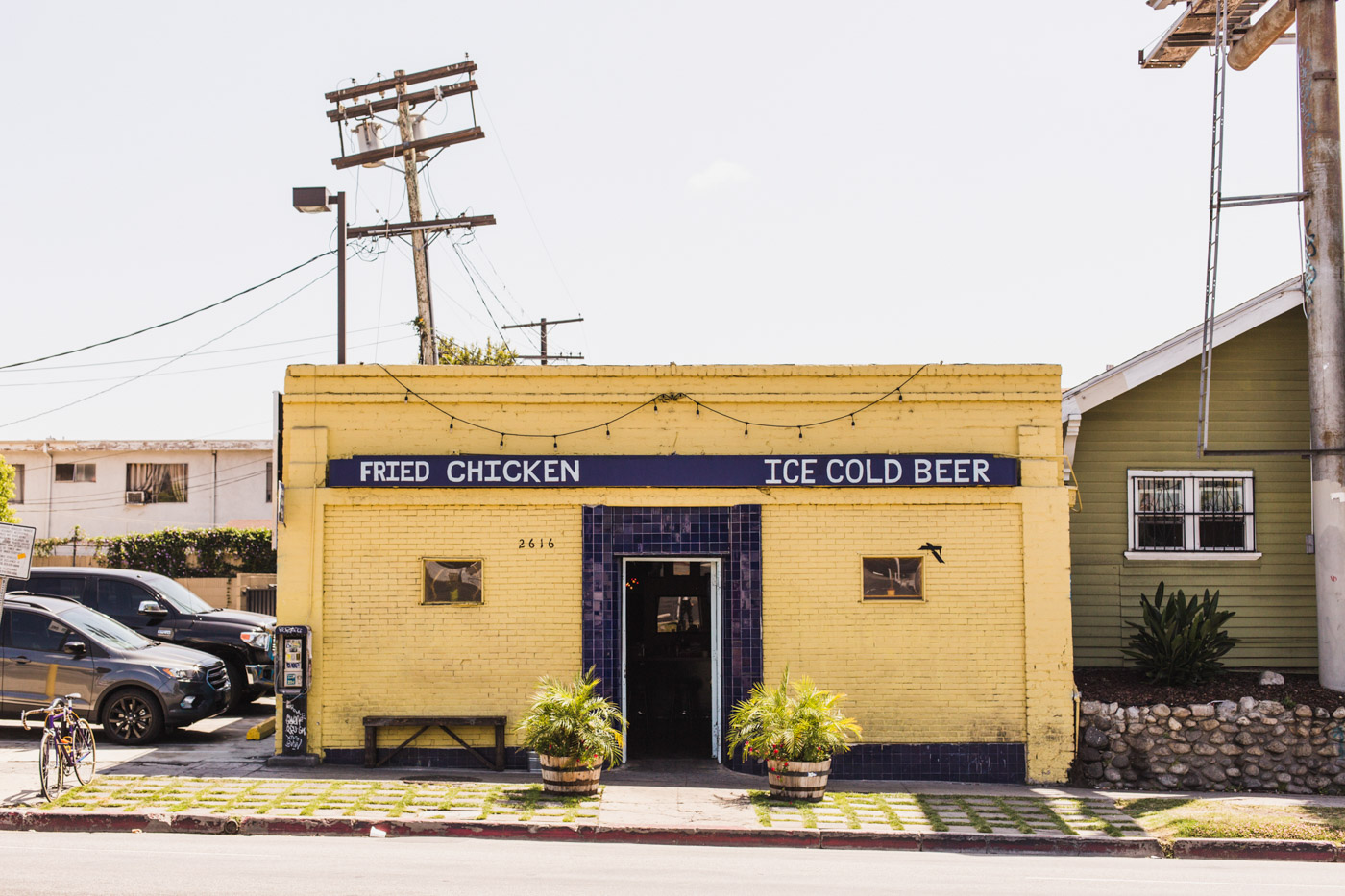
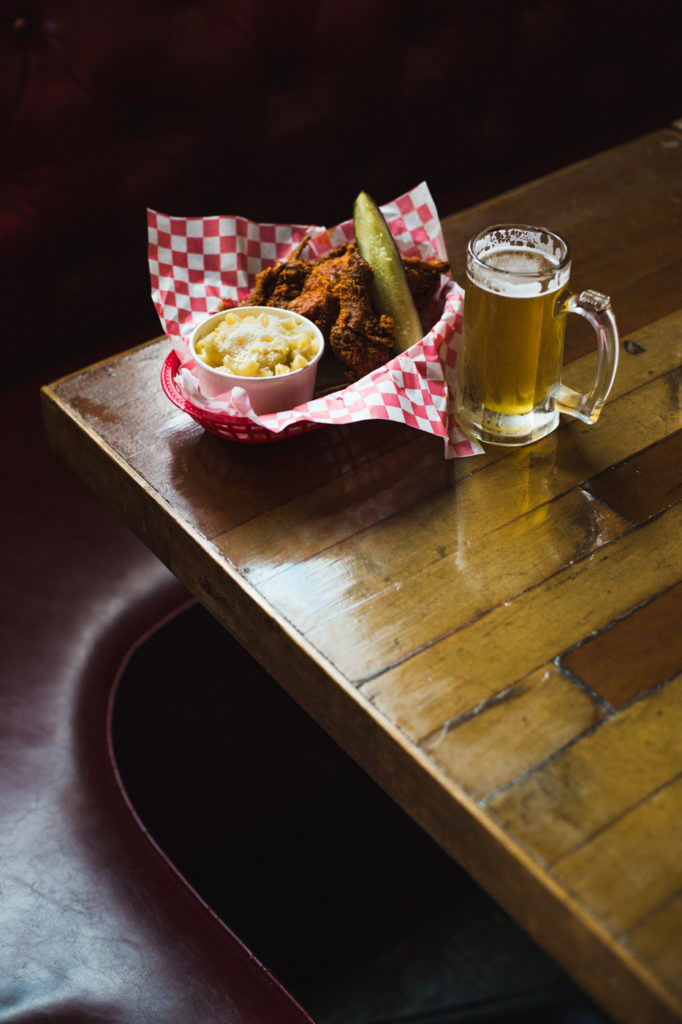
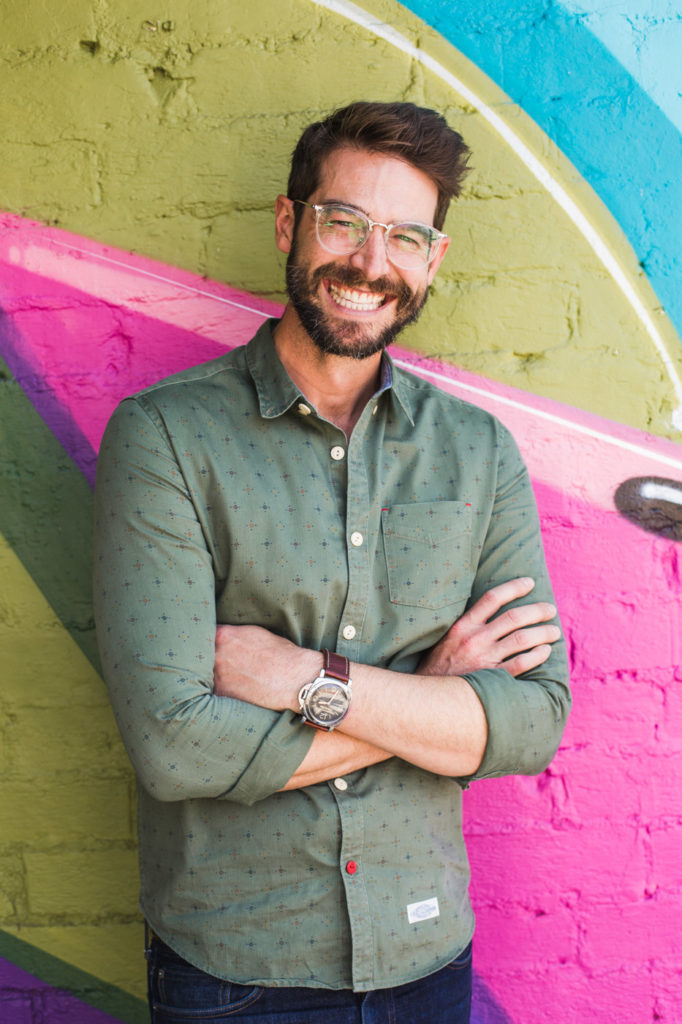
—
Crawford’s
2616 Beverly Boulevard
Los Angeles, CA 90057
Fried chicken. Ice cold beer. Five little happy words painted across the front of Crawford’s Crayola-yellow and blue-tiled facade.
Crawford’s serves one menu all day long, alongside wine and beer. As the building portends, fried chicken is the order at every table. We pile into a booth to sink our teeth in, and Gordon remarks, “the breading on the fried chicken is perfect. It’s so evenly distributed and perfectly golden.” The two options—hot or regular—come with well-executed usual suspect sides: coleslaw, beans, potato salad and more. Everything is served within the thrift-shop-meets-pool-hall atmosphere, under the flicker of vintage Schlitz signs, framed shooting targets, and $3 Budweiser pours lined up beneath the shade of an upside down canoe.
When partners Dave Abrams, Dustin Lancaster and Matthew Dittmann moved in four years ago, the area was not without its growing pains. They took over an existing bar, and as the only one within a three-mile radius in a neighborhood a little rough around the edges, the place had seen some action. “Somebody got shot in here, somebody got stabbed in the bathroom,” says Abrams. “There’s a bullet hole right there that we covered up.” They gave the place a facelift, but not so drastic that regulars would feel out of place.
In a short amount of time, Abrams has witnessed Hi-Fi changing. In the first month a brick was thrown through the windshield of a car out front and homicide detectives walked in to investigate a nearby murder. Now those incidents are rare. “I think it’s going to grow,” says Abrams. “I think the strip of Beverly in the next five, six years is going to be like Highland Park.”
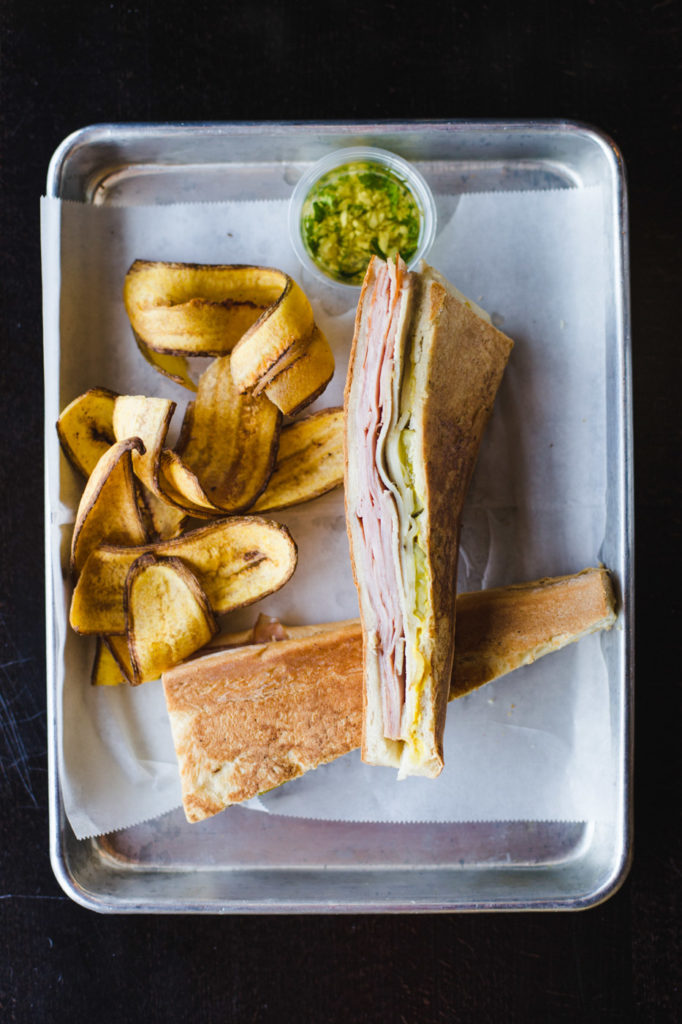
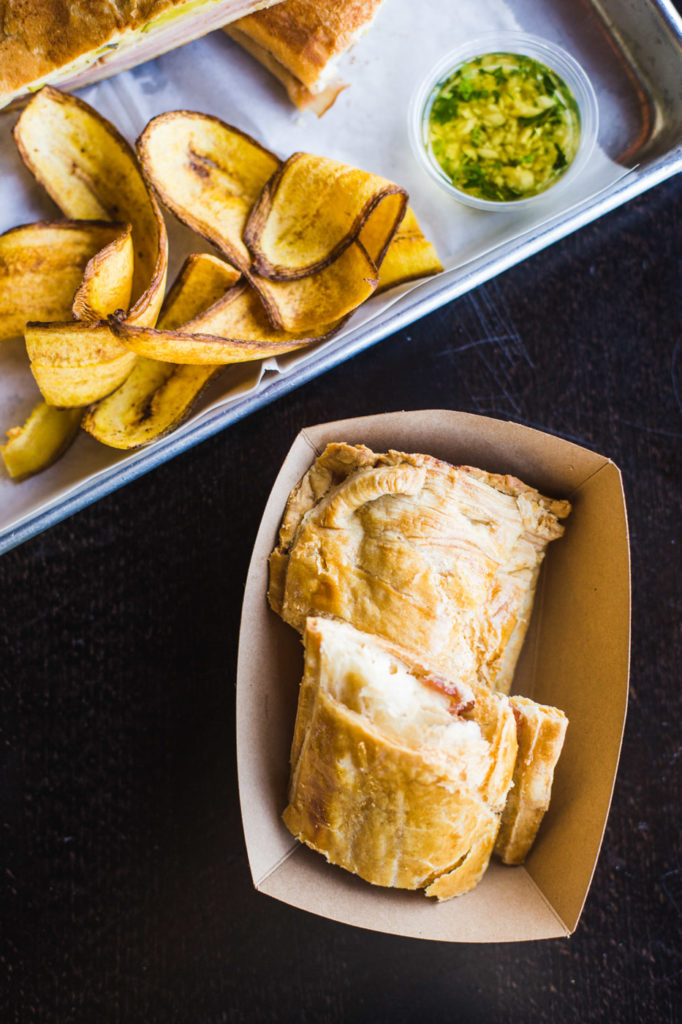
—
Gigi’s
2200 W Temple Street
Los Angeles, CA 90026
On any given day, older men in sunglasses and fedoras lounge outside Gigi’s watching traffic. They greet one another, ducking inside for an espresso and returning to light up thick papery Cuban cigars.
Gigi’s—a family-owned business named after the granddaughter of the original owner—is one of the longest standing restaurants in Historic Filipinotown, having recently celebrated its twenty-fifth anniversary. The building houses a playlist of Afro Cuban jazz and some enticing sandwiches. We enjoyed The Habanero—roasted pork mingling with crunchy belly skin and grilled and pickled onions all on house-made bread—and the traditional Cuban sandwich, cut long and pointy, served with garlic saturated mojo sauce and curly plantain chips.
On the sweeter end of the spectrum, the space is the hub for its buzzing bakery, as men and women carry out armfuls of bags stacked with white pastry boxes. Guava and cheese pastelitos, meated empanadillas, cookies, tarts and sugared breads of all varieties fill glass cases until they’re nearly bursting (last time I was in, I counted no less than eighty-seven types of pastries, not including custom cakes).

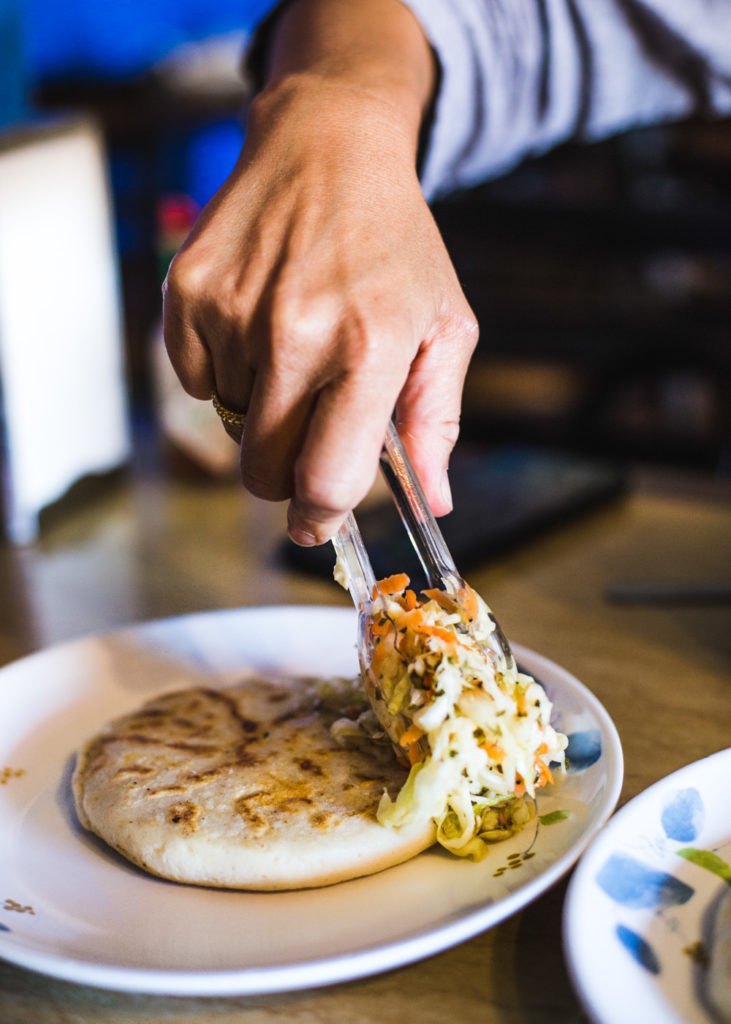
—
Pupuseria y Panaderia Atecosol
2523 W Temple Street
Los Angeles, CA 90026
Gordon has a tradition every Christmas Eve of celebrating with her staff over a meal of pupusas and champagne. For this temptingly adoptable occasion she turns to Pupuseria y Panaderia Atecosol for the supply. The blink-and-you’ll-miss-it place is situated in a freestanding red-orange house dripping with light-up icicles and obscured by a jungle of plants. Inside, a soap opera plays on the television next to El Salvador’s flag. Fabric red roses explode out of vases on each table, a contrast to the shocking royal blue walls. A pork-and-bean and cheese-and-flower stuffed pupusa arrive lightly blistered and deliciously melty, and the classic cabbage topping and red salsa are fresh, acidic and a perfect counterpoint to the marvelously oily dough.
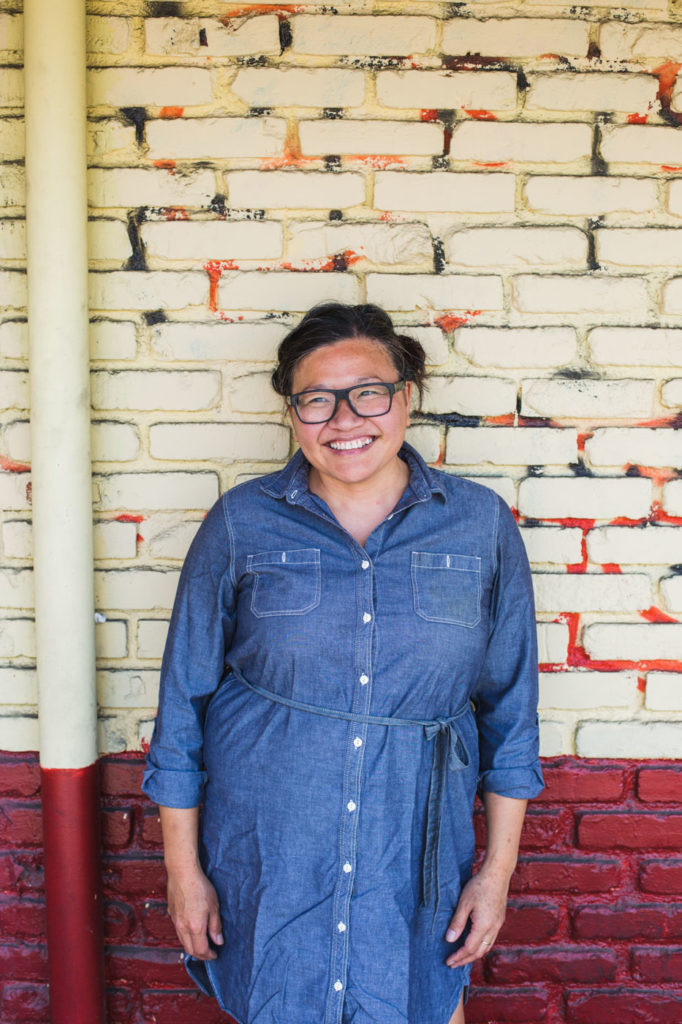
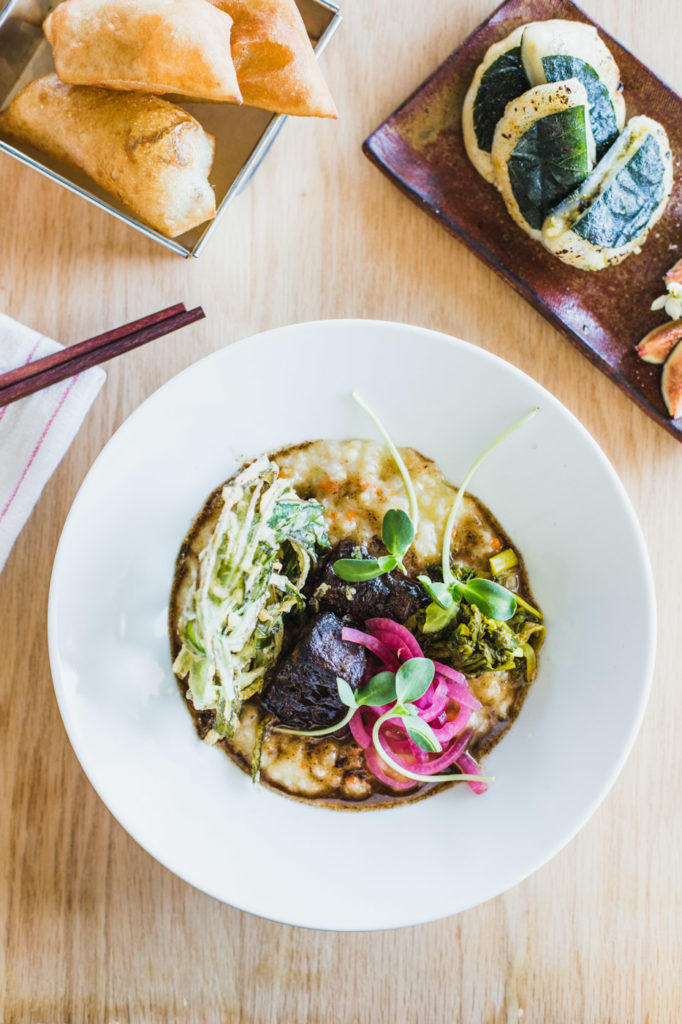
—
Porridge + Puffs
2801 Beverly Boulevard
Los Angeles, CA 90057
Chef and owner Minh Phan, petite and punchy, spectacled, and never without a giant grin, greets us to share her new venture. What started as a pop-up became a hunt for a restaurant space to put down roots.
Phan, who is of Vietnamese descent, searched for two years before settling on opening in Historic Filipinotown. “I wanted an up-and-coming neighborhood,” she says, citing her determination to comfortably compensate her employees, keep using the best ingredients available, and still maintain an accessible price point for the community she was moving into. “I want to pay people better than what they are being paid now. My food cost is always going to be high. So my only option was to be in a place where the overhead was low, because I’m not going to ever compromise my quality, or my ingredients.”
Phan’s vision for Hi-Fi is one of unity between colleagues and an environment that supports a culinary creative hub. She refuses to compete with anyone in the community. “We will not do espresso, that’s for the Tactile guys,” she assures us. “I’ll never do chocolates, I’ll never do cakes. If you want a more extensive dessert, go [to] Valerie’s. That’s my mentality, I want to promote my neighbors.”
If the thought of porridge conjures up images of British orphans or grandmotherly rhymes, Porridge + Puffs will be that much more surprising and satisfying upon experience. The various toppings of each lovingly crafted bowl show a deep wisdom for flavor and an invigorating complexity. There’s always something fermented, often something fried, and occasionally an unheard of ingredient or combination. A spiral of tempura morning glory brings me back to tasting the garlicky green for the first time on a porch in Hoi An. Tendrils of hot pink rose-geranium pickled onions add zing. Filaments of chayote squash offer a pleasant crunch, contrasting with the silky bed of heirloom Koda Farms rice cooked in stock (sometimes chicken and mirepoix, sometimes dashi or negi—a type of Japanese green onion). Trapezoidal “puffs”—deep-fried rice flour dough—could serve as a side to help ladle all that warming porridge, or as a dessert, sprinkled with cardamom and sugar. The Wonder Woman cozies coiled around glasses of coffee seem a touch non-sequitur until I look around and notice most of Phan’s cooks and staff are female. Phan and her Amazons creating impeccable dishes; love letters to each person in the dining room. Wonder women indeed.
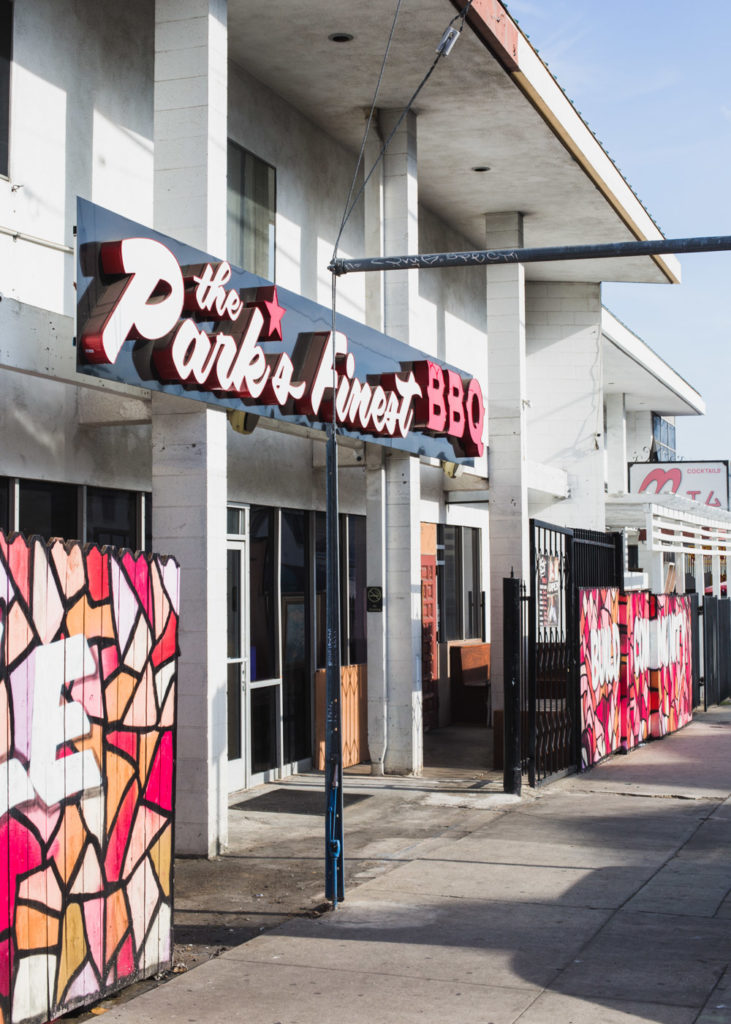
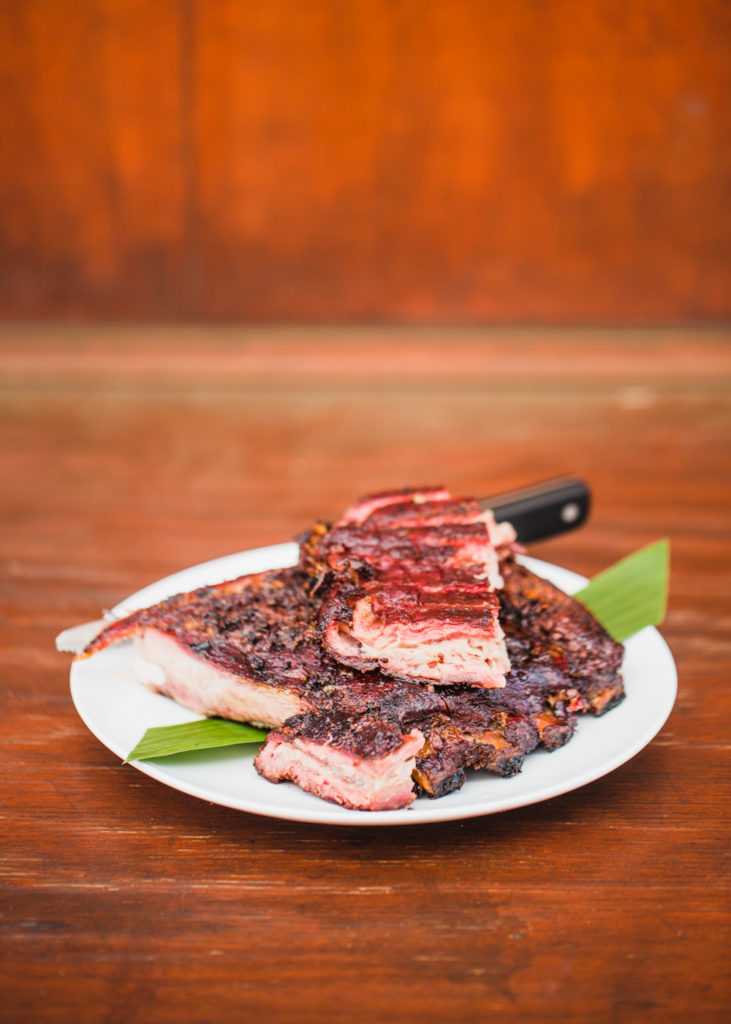
—
Park’s Finest BBQ
1267 W Temple Street
Los Angeles, CA 90026
Park’s Finest BBQ is an unexpected haven of cool, with its graffiti art, white subway tile, craft beer selection, and the tongue-in-cheek tagline “smoke meat every day.” Off the menu, the signature rice flour cornbread bibingka wears a thin layer of glittering sugar and boasts a velvety crumb that sticks together better than its Southern cousin. Deep-red hued, spice-crusted pork ribs are tender and inviting, and thin strips of tri-tip make friends with a mild horseradish cream. Pineapple barbecue sauce adorns each table alongside bottles of an addictive vinegar, soy sauce, and garlic combo to soak every bite with umami.
Husband-and-wife team Johneric Concordia and Christine Araquel-Concordia had lived in Historic Filipinotown—Johneric for twenty-seven years, and Christine for eight years—before opening up the restaurant in 2012. Johneric explains how the neighborhood directly influenced their cuisine: “The food we’ve cooked is neither fusion nor classic variations of Filipino cuisine. This is the natural progression of a cooking style developed by Filipino immigrants raising a family next to Mexicans, Salvadorians, Thais, Laotians, Vietnamese, Nicaraguans, and the range of other immigrants in this multi-ethnic enclave.”
While necks stretch eyeing Hi-Fi for development, the Concordias are deeply invested in protecting the area’s identity and ensuring the future of its residents. “There is this fear of displacement with our neighborhood being identified as hip and trendy,” says Christine. “[We want] very much to be involved in building up this community—that includes us participating and identifying our needs, and addressing those needs, including access to affordable housing.”
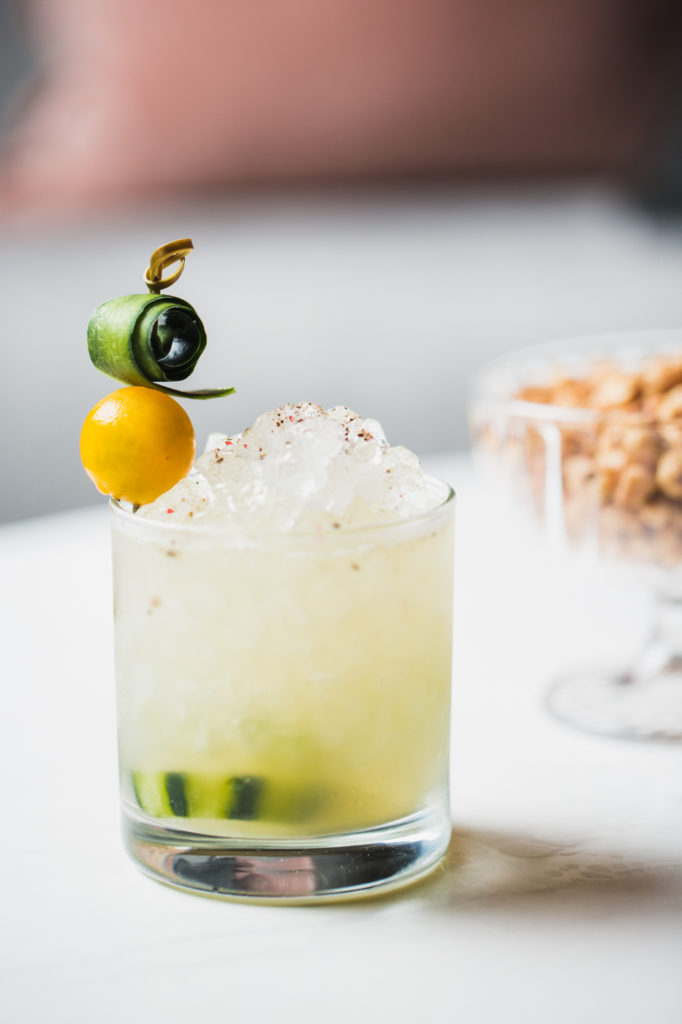
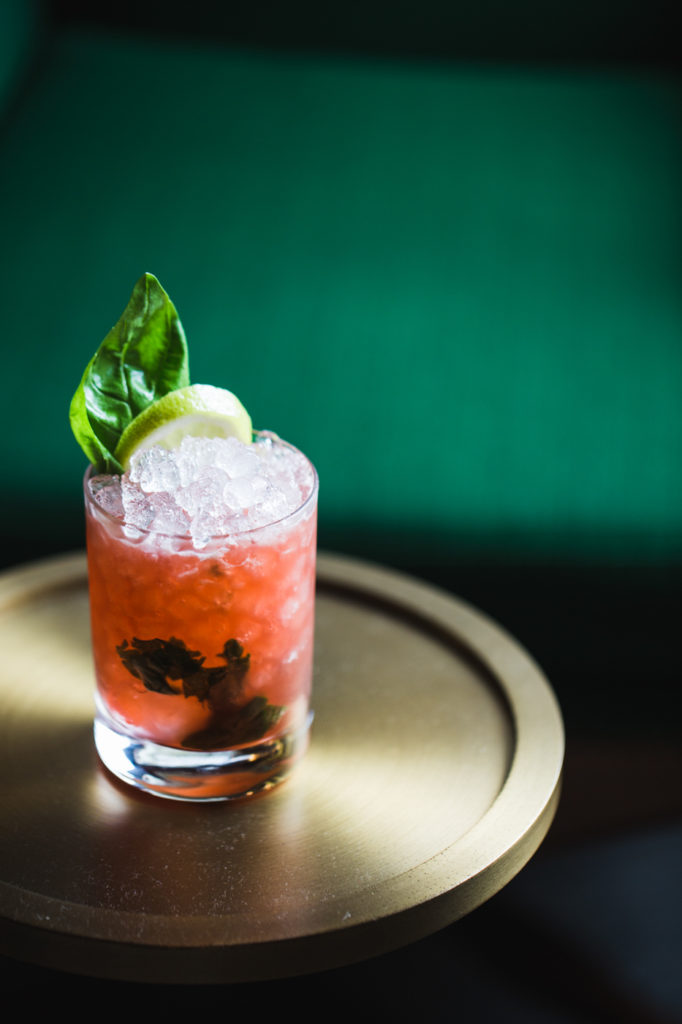
—
Genever
3123 Beverly Boulevard
Los Angeles, CA 90057
Genever’s dark entrance is unmarked except for a glowing neon martini. Should that glass jump from its gaseous chamber into my hand as a real drink, I would expect a gin-based concoction, as the bar specializes in the juniper spirit. From Old Tom to Navy Strength, Plymouth to Sloe, lead bartender Kellie Norris can teach the differences of each gin and devise exceptional cocktails utilizing flavors from the Philippines: calamansi, pandan, mango and the occasional dash of Datu Puti, a Filipino vinegar made from sugar cane. Never one to pass up a good corn nut, I’m especially enamored with the bar snacks. Co-owner Roselma Samala tells me these addictive morsels are often eaten alongside beer in the Philippines, and remind their Filipino guests of home.
The bar pays homage to ladies of speakeasies past, trailblazers who found fortune and notoriety during America’s Prohibition. As women of Filipino heritage, founders Patricia Perez, Roselma Samala and Christine Sumiller are poised to modernize and restore some of the luster of Filipino heritage that has waned in the area. “I look forward to the time [when] Hi-Fi not only offers a destination neighborhood, but also people know exactly where Hi-Fi is on the map and [it] has its own identity,” remarks Samala. As for the growth and future of Historic Filipinotown, Perez expresses hope with a dose of reservation. “It can be for the better,” she says. “So long as those coming into Hi-Fi are being cognizant and respectful of the importance and value of the community, its long-time residents and businesses, and every element that makes this village unique.”






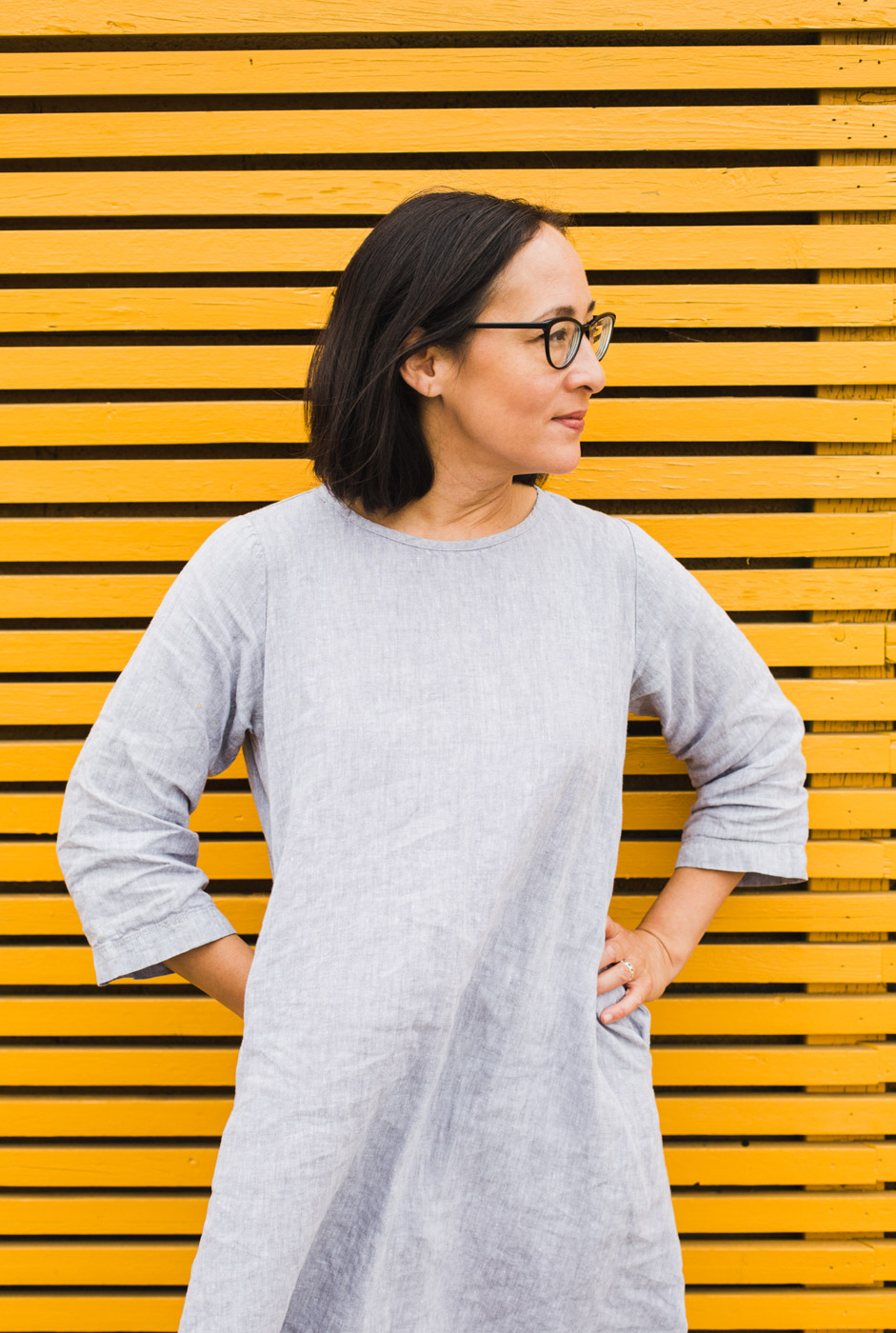

Our comments section is for members only.
Join today to gain exclusive access.